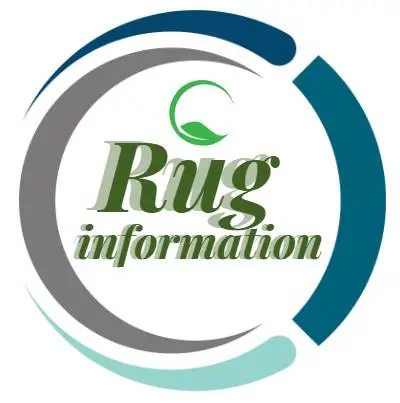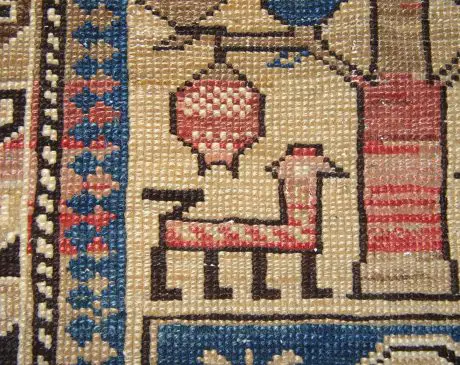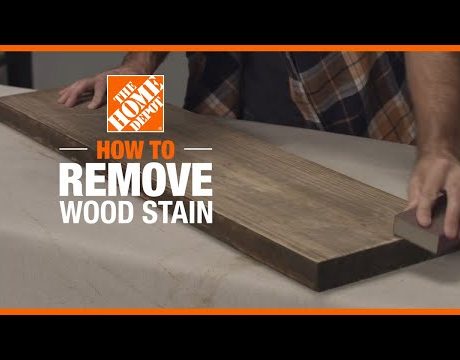How Can You Tell If a Turkish Rug is Real
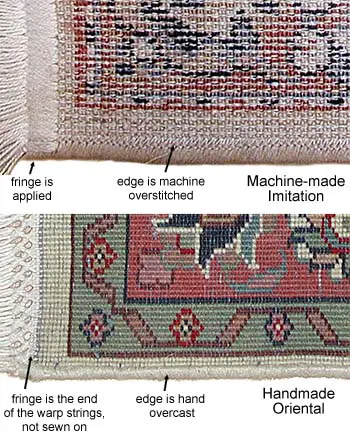
How can you tell if a Turkish rug is real? There are several ways to determine whether or not a Turkish rug is authentic. First, examine the overall design of the rug.
Authentic Turkish rugs typically feature intricate patterns and detailed designs. If the rug you are inspecting has a simplistic design or looks mass-produced, it is likely not an authentic Turkish rug. Secondly, take a close look at the materials used to construct the rug.
Authentic Turkish rugs are made from high-quality wool and natural dyes. If the rug you are considering purchasing is made from synthetic materials or features bright, artificial colors, it is probably not an authentic Turkish rug. Finally, ask about the history of the rug.
Many authentic Turkish rugs have been passed down through generations of families.
When it comes to purchasing a Turkish rug, how can you tell if it is real? There are a few key indicators that you can look for to help determine whether or not a rug is authentic. One of the most important things to look at is the foundation of the rug.
A real Turkish rug will be made with a sturdy foundation of cotton or wool, while fake rugs may be made with synthetic materials. Another indicator of authenticity is the knotting technique used. Real Turkish rugs are hand-knotted, meaning each individual knot is tied by hand.
This process is time-consuming and results in a much higher quality rug. Finally, take a look at the overall design of the rug. Authentic Turkish rugs often feature intricate patterns and detailed designs, while fake rugs may have simpler patterns or even just copies of famous designs.
If you keep these things in mind when shopping for a Turkish rug, you should be able to tell whether or not it is real. Of course, nothing beats working with a reputable dealer who can guarantee the authenticity of their rugs.
How to Tell If a Rug is a Good Quality
When shopping for a new rug, it is important to consider the quality of the rug. There are a few things you can look for to determine if a rug is a good quality:
1. Material – A high-quality rug will be made from natural materials like wool or cotton. Synthetic materials like polyester or nylon are less durable and won’t last as long.
2. Knot count – The number of knots per square inch is a good indicator of how tightly woven the rug is. A higher knot count means a more sturdy and well-made rug.
3. Density – Another way to gauge the quality of a rug is by its density, or how thick the pile is. A denser rug will be more durable and longer lasting than one with thinner piles.
4. Colorfastness – You’ll want to make sure that the colors in your rug won’t fade over time. Check for colorfastness by rubbing a white cloth on different areas of the rug; if any color rubs off onto the cloth, it isn’t colorfast and will likely fade with age and use.
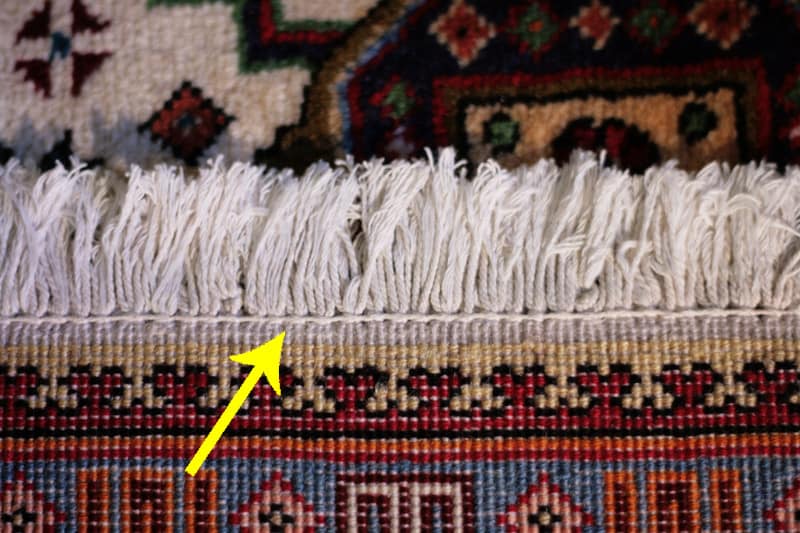
Credit: www.loveyourrug.ca
How Much is a Real Turkish Rug?
When it comes to purchasing a Turkish rug, there are a few things that you need to take into account. The first is the size of the rug. Turkish rugs come in all different sizes, so you will need to decide how big or small you want your rug to be.
The second thing to consider is the design of the rug. Turkish rugs come in a wide variety of designs, so you will need to choose one that fits your personal style. Finally, you need to think about the price of the rug.
Turkish rugs can range in price from a few hundred dollars to several thousand dollars. So, how much is a real Turkish rug? It really depends on what you are looking for!
How Can You Tell If a Vintage Rug is Real?
There are a few things you can look for when trying to determine if a vintage rug is real or not. First, check the size of the rug. If it is too small or too big for the space it is in, it is likely not an authentic vintage rug.
Second, examine the colors and patterns on the rug. If they are faded or appear to be fading, this could be a sign that the rug is not real. Third, feel the texture of the rug.
Authentic vintage rugs should be made of natural materials like wool or cotton and should be fairly soft to the touch. Finally, look at the stitching on the rug. If it appears to be loose or falling apart, chances are good that the rug is not an authentic vintage piece.
What are Authentic Turkish Rugs Made Of?
When it comes to authentic Turkish rugs, there are a few key things that you should look for in order to ensure that you are getting a genuine product. First and foremost, authentic Turkish rugs are made entirely of wool. This is one of the key distinguishing factors between Turkish rugs and other types of Oriental rugs, which often incorporate a variety of different materials in their construction.
In addition to being made of wool, authentic Turkish rugs also feature intricate patterns and designs that are specific to the region. These patterns typically include geometric shapes and motifs as well as floral elements. Another important thing to look for when trying to identify an authentic Turkish rug is the way in which it has been constructed.
Traditionally, these rugs are hand-knotted, meaning each individual strand of wool has been tightly tied around a series of warp and weft threads. This process is incredibly time consuming and results in a much higher quality rug than those that are machine-made. Authentic Turkish rugs will also usually feature fringe on both ends, another telltale sign of their handmade construction.
If you’re interested in purchasing an authentic Turkish rug, be sure to do your research before making any decisions. There are many imitation products on the market so it’s important to know what you’re looking for before making any purchase. With a little effort, however, it’s easy to find genuine Turkish rugs that will add beauty and style to your home for years to come.
What are the Characteristics of Turkish Carpets?
Turkish carpets, also called Anatolian carpets, are hand-woven floor coverings made in Turkey. They often feature intricate patterns and vibrant colors, and are made of natural materials like wool or cotton. Turkish carpets are used both for decorative purposes and as functional flooring; they can be hung on walls or used as area rugs.
Turkish carpets have a long history, dating back to the 13th century. Carpet weaving was an important craft in the Ottoman Empire, and many of the most famous Turkish carpets were made during this time period. The best-known type of Turkish carpet is the “guls,” which features a central medallion surrounded by smaller geometric shapes.
Other popular designs include the “tree of life” motif and floral patterns. Today, Turkish carpets are still made using traditional methods passed down through generations of craftspeople. Many of these artisans work in small family workshops, using hand-spun yarns and natural dyes to create one-of-a-kind pieces.
While mass-produced machine-made copies of Turkish carpets exist, they cannot match the quality or uniqueness of a genuine handwoven carpet.
The Difference Between a FAKE and AUTHENTIC Turkish Carpet
Conclusion
When trying to determine if a Turkish rug is real, there are a few things you can look for. First, examine the foundation of the rug and see if it is made of cotton or wool. If it is made of anything else, it is likely not a real Turkish rug.
Second, look at the knots on the rug. Real Turkish rugs will have symmetrical knots that are evenly spaced. Finally, take a look at the pattern on the rug.
Real Turkish rugs will have intricate patterns that are pleasing to the eye.
